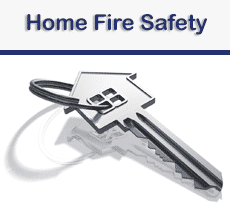 Most home fire safety tips tend to ignore home wildfire protection since this type of protection applies only to those homes located in areas prone to this type of fire hazard. However, when this type of disaster occurs, many experience it only once because their homes can be completely destroyed through no fault of their own.
Most home fire safety tips tend to ignore home wildfire protection since this type of protection applies only to those homes located in areas prone to this type of fire hazard. However, when this type of disaster occurs, many experience it only once because their homes can be completely destroyed through no fault of their own.
You cannot always completely protect your home, but there are still many things you can do to reduce the chances of you becoming yet another statistic during wildfire season. Here are some home fire safety tips that that will help you to protect your home in such an event.
Create a Firebreak
Your first thought should be to preventing the fire reaching your home. Home wildfire protection starts about 30-40 yards from your building. When we use the term ‘home’ here, we shall be referring to the structure of your house, not the garden, shed or any detached garage. We are referring to the living space.
a) Reduce tree growth as far as possible. If you do not want to remove all the trees, thin them out so that a wildfire will not be easily transmitted from one to the other. In areas prone to wildfires, it is best to remove all trees and bushes for at least 30 yards from the house. You can plant that area with a short cut lawn, rock garden, vegetable garden, driveway or paths.
b) If you must plant bushes, then use hostas, buddleias and other plants with deep roots and thicker leaves that are not so easy to set alight. They also tend to recover better after a fire, though that will not be your main worry!
c) Stores of wood and other flammables are best kept in a brick shed, or at least 20 yards from the house. The idea is to create a firebreak and storing flammables within that area would be contrary to that objective. For the same reason, employ good standards of gardening and husbandry, and keep the area free of grass clippings, weeds and other forms of dead or dried-out vegetation.
The Immediate Areas
Flammable decking is not recommended in areas prone to fires. Winds will blow sparks and burning detritus onto your house, and dry wooden decking could be deadly. For the same reason, keep your gutters free from dried organic matter and the entire area within 4-5 feet of your home clear of combustibles.
This will not always be possible, particularly with wood-built homes, but do all you can. Dead, dried vegetation such as weeds or dried bushes can catch alight much easier from flying embers than the side of a log cabin or a wooden porch, and everything you can do to remove the more easily ignitable materials will increase your home wildfire protection.
Home Fire Safety Tips: Water Availability
Have plenty of water available. You will reduce the potential for a disaster by being able to extinguish any flames that reach your home, and even those further out. The longer your hose the better, and a pressure washer would be even better for extinguishing any deeper seated fires or extinguishing flames from a distance.
Home fire safety with regard to home wildfire protection is a matter of common sense. Each home will have its own particular surrounding landscaping and plant life, so any home fire safety tips can be expressed only in general terms. It is up to you to adapt them to your specific environment. Keep in mind that fire is spread by sparks and burning embers carried on the wind, and if you can prevent these from reaching your home you will have done all you can do.


About The Author: Karengustin
More posts by karengustin